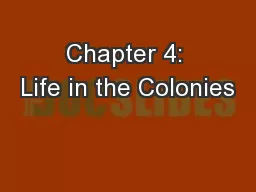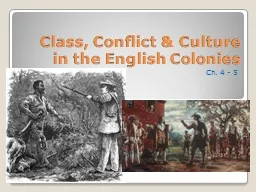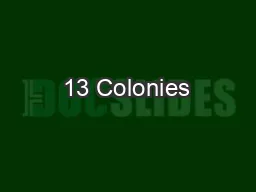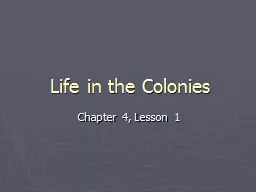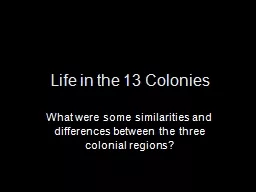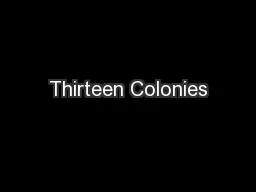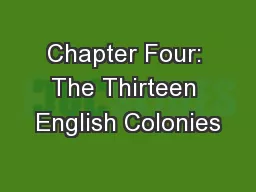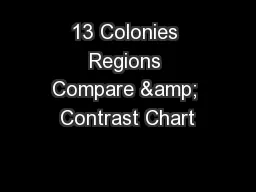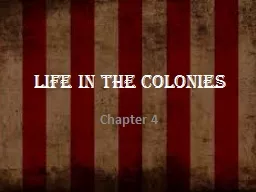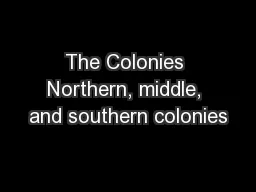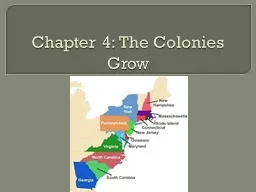PPT-Chapter 4: Life in the Colonies
Author : natalia-silvester | Published Date : 2018-03-13
Section 2 Colonial Society The Family in Colonial Times Mainly living on farms with extended family parents children plus other members such as grandparents
Presentation Embed Code
Download Presentation
Download Presentation The PPT/PDF document "Chapter 4: Life in the Colonies" is the property of its rightful owner. Permission is granted to download and print the materials on this website for personal, non-commercial use only, and to display it on your personal computer provided you do not modify the materials and that you retain all copyright notices contained in the materials. By downloading content from our website, you accept the terms of this agreement.
Chapter 4: Life in the Colonies: Transcript
Download Rules Of Document
"Chapter 4: Life in the Colonies"The content belongs to its owner. You may download and print it for personal use, without modification, and keep all copyright notices. By downloading, you agree to these terms.
Related Documents

